Christian Martyrs
Christian Martyrs
And I saw thrones and they that sat upon them, and judgment was given unto them. And I saw the souls of them that had been beheaded (G3990 pelekizō) for
[a] the testimony of Jesus — Revelation 12:17; 19:10
and
[b] for the Word of God — the Oracles Roman 3:1-4; Revelation 12:17
and who had not worshiped the beast, nor his image, nor had received his mark upon their foreheads or on their hands; and they lived and reigned with Christ a thousand years (Revelation 20:4).
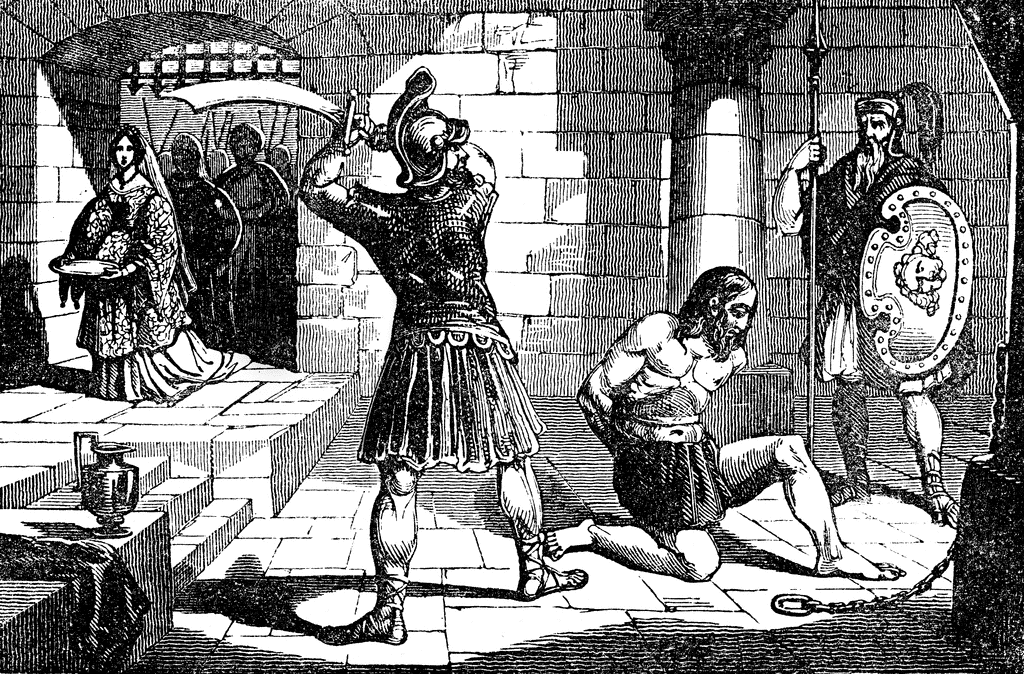
beheaded (G3990 pelekizō) — to cut off with an axe, to behead; they are martyrs
Matthew 13:52 Then said He unto them, “Therefore every scribe who is instructed unto the Kingdom of Heaven is like unto a man that is a householder, who bringeth forth out of his treasure things new and old.”
[a] the “new” treasure is the testimony of Jesus — Revelation 12:17; 19:10
and
[b] the “old” is the Word of God — the Oracles Roman 3:1-4; Revelation 12:17
The “new” — justice, mercy and faith (Matthew 23:23)— is the capstone that rests on the “old” — the foundation stone — the Torah, the law and the prophets.
A capstone cannot stand on its own. It needs something to rest on and that resting on is the foundation stone.
Matthew 23:23 “Woe unto you, scribes and Pharisees, hypocrites! For ye pay tithe of mint and anise and cummin, and have omitted the weightier matters of the law: justice, mercy and faith. These ought ye to have done and not to leave the other undone. — i.e. both [a] and [b] are required
Below are a List of Christian Martyrs
In the Gospels and Acts
1. John the Baptist
Matthew 14:1 At that time Herod the tetrarch heard of the fame of Jesus 2 and said unto his servants, “This is John the Baptist. He is risen from the dead, and therefore mighty works show forth themselves in him.” 3 For Herod had laid hold on John, and bound him and put him in prison for the sake of Herodias, his brother Philip’s wife. 4 For John said unto him, “It is not lawful for thee to have her.”
5 And when he would have put him to death, he feared the multitude, because they counted him as a prophet.
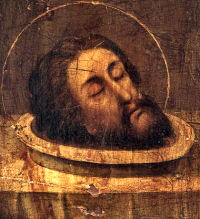 6 But when Herod’s birthday was kept, the daughter of Herodias danced before them and pleased Herod, 7 whereupon he promised with an oath to give her whatsoever she would ask.
6 But when Herod’s birthday was kept, the daughter of Herodias danced before them and pleased Herod, 7 whereupon he promised with an oath to give her whatsoever she would ask.
8 And she, being beforehand instructed by her mother, said, “Give me here John the Baptist’s head on a charger.”
9 And the king was sorry; nevertheless for the oath’s sake, and those who sat with him at meat, he commanded it to be given her. 10 And he sent, and beheaded John in the prison.
11 And his head was brought on a charger and given to the damsel, and she brought it to her mother. 12 And his disciples came, and took up the body and buried it, and went and told Jesus.
— beheaded by King Herod
2. Stephen
Acts 7:54 When they (Jews from different cities Acts 6:9) heard these things, they were cut to the heart, and they gnashed with their teeth at him. 55 But he, being full of the Holy Ghost, looked up steadfastly into heaven, and saw the glory of God, and Jesus standing at the right hand of God, 56 and he said, “Behold, I see the heavens opened, and the Son of Man standing at the right hand of God.”
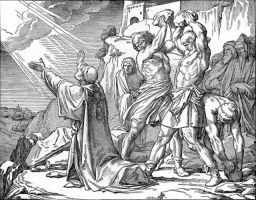 57 Then they cried out with a loud voice, and stopped their ears, and ran upon him with one accord, 58 and cast him out of the city and stoned him. And the witnesses laid down their clothes at the feet of a young man whose name was Saul.
57 Then they cried out with a loud voice, and stopped their ears, and ran upon him with one accord, 58 and cast him out of the city and stoned him. And the witnesses laid down their clothes at the feet of a young man whose name was Saul.
59 And they stoned Stephen as he called upon God and said, “Lord Jesus, receive my spirit!”
60 And he kneeled down and cried with a loud voice, “Lord, charge not this sin against them.” And when he had said this, he fell asleep. — Killed by Jews from different cities and countries that had come up to Jerusalem to bring offerings and to attend the feast of pentecost:“from the Synagogue of Libertines, Cyrenians, Alexandrians, and those of Cilicia and of Asia,” including Saul (Acts 6:9).
3. James, the son of Zebedee
Acts 12:1 Now about that time Herod the king stretched forth his hands to vex certain of the church. 2 And he killed James the brother of John with the sword. — killed by King Herod
Clarke: By killing with the sword we are to understand beheading. Among the Jews there were four kinds of deaths: stoning; burning; killing with the sword, or beheading; and, strangling.
The third was a Roman as well as a Jewish mode of punishment. Killing with the sword was the punishment which, according to the Talmud, was inflicted on those who drew away the people to any strange worship, Sanhedr. fol. iii. James was probably accused of this, and hence the punishment mentioned in the text.
4. James, brother of Jesus
James was an early leader of the Jerusalem Church of the Apostolic Age, with which Paul was also affiliated. He died as a martyr in AD 62 or 69. Eusebius wrote that he was stoned to death by the Jews (Church History Book II Ch 23. The Martyrdom of James, who was called the Brother of the Lord).
 The Jews (Scribes and Pharisees) came, therefore, in a body to James (in Jerusalem), and said: “We entreat thee, restrain the people: for they have gone astray in their opinions about Jesus, as if he were the Christ.”
The Jews (Scribes and Pharisees) came, therefore, in a body to James (in Jerusalem), and said: “We entreat thee, restrain the people: for they have gone astray in their opinions about Jesus, as if he were the Christ.”
But James boldly replied “Christ himself sitteth in heaven, at the right hand of the Great Power, and shall come on the clouds of heaven.” For this, they began to stone him, but he turned, and kneeled down, and said: “I beseech thee, Lord God our Father, forgive them; for they know not what they do.”
And so he suffered martyrdom; and they buried him on the spot, and the pillar erected to his memory still remains, close by the temple. This man was a true witness to both Jews and Greeks that Jesus is the Christ. And shortly later Vespasian besieged Judaea, taking them (Scribes and Pharisees) captives.
According to protestant theologian Philip Schaff, James seems to have taken the place of James the son of Zebedee, after his martyrdom, around 44 AD.
5. Simon Peter
According to Catholic teaching, in Matthew 16:18 Jesus promised Peter a special position in the Church. Most ancient Christian churches venerate Peter as a major saint and as the founder of the Church of Antioch and the Diocese of Rome, but differ in their attitudes regarding the authority of his successors.
 According to Christian tradition, Peter was crucified in Rome under Emperor Nero. Catholic traditionally counted him as the first bishop of Rome—or pope—and also by Eastern Christian tradition as the first patriarch of Antioch. But other Christians attest that the first pope of Rome was another Simon—Simon Magus. Eusebius of Caesarea relates that when Peter confronts Simon Magus at Judea (mentioned in Acts 8), Simon Magus flees to Rome, where the Romans began to regard him as a god.
According to Christian tradition, Peter was crucified in Rome under Emperor Nero. Catholic traditionally counted him as the first bishop of Rome—or pope—and also by Eastern Christian tradition as the first patriarch of Antioch. But other Christians attest that the first pope of Rome was another Simon—Simon Magus. Eusebius of Caesarea relates that when Peter confronts Simon Magus at Judea (mentioned in Acts 8), Simon Magus flees to Rome, where the Romans began to regard him as a god.
Early Church tradition says that Peter probably died by crucifixion (with arms outstretched and head down as he himself had desired to suffer on his claim of being unworthy to die the same way as his Saviour) at the time of the Great Fire of Rome in the year AD 64.
6. Paul the Apostle
The date of Paul’s death is believed to have occurred after the Great Fire of Rome in July 64, but before the last year of Nero’s reign, in 68. According to the First Epistle of Clement (95–96 AD), Ignatius (110 AD)] and Dionysius of Corinth (166–174 AD) Paul was martyred. The apocryphal Acts of Paul (160 AD), Tertullian (200 AD), Eusebius of Caesarea (320 AD), Lactantius (318 AD), Jerome (392 AD), John Chrysostom (c. 349–407) and Sulpicius Severus (403 AD) describe the martyrdom of Paul citing that Nero condemned Paul to death by decapitation at Rome.
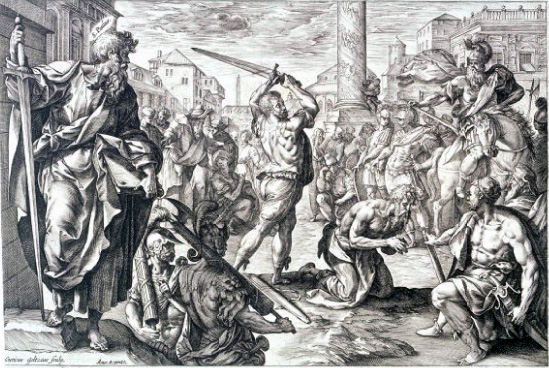 A legend later developed that his martyrdom occurred at the Aquae Salviae, on the Via Laurentina. According to this legend, after Paul was decapitated, his severed head rebounded three times, giving rise to a source of water each time that it touched the ground, which is how the place earned the name “San Paolo alle Tre Fontane” (“St Paul at the Three Fountains”).
A legend later developed that his martyrdom occurred at the Aquae Salviae, on the Via Laurentina. According to this legend, after Paul was decapitated, his severed head rebounded three times, giving rise to a source of water each time that it touched the ground, which is how the place earned the name “San Paolo alle Tre Fontane” (“St Paul at the Three Fountains”).
According to Tradition
7. Andrew the Apostle
Andrew the Apostle was an apostle of Jesus according to the New Testament. He is the brother of Peter. According to Orthodox tradition, the apostolic successor to Andrew is the Patriarch of Constantinople.
Eusebius in his Church History 3.1 quoted Origen as saying that Andrew preached in Scythia. The Chronicle of Nestor adds that he preached along the Black Sea and the Dnieper river as far as Kiev, and from there he traveled to Novgorod. Hence, he became a patron saint of Ukraine, Romania and Russia. According to Hippolytus of Rome, Andrew preached in Thrace, and his presence in Byzantium is mentioned in the apocryphal Acts of Andrew. According to tradition, he founded the See of Byzantium (later Constantinople and Istanbul) in AD 38, installing Stachys as bishop. This diocese would later develop into the Patriarchate of Constantinople. Andrew, along with Stachys, is recognized as the patron saint of the Patriarchate. Basil of Seleucia also knew of Apostle Andrew’s missions in Thrace, Scythia and Achaea.
Andrew is said to have been martyred by crucifixion at the city of Patras (Greece’s third-largest city) in Achaea, in AD 60. Early texts, such as the Acts of Andrew known to Gregory of Tours describe Andrew as bound, not nailed, to a Latin cross of the kind on which Jesus is said to have been crucified; yet a tradition developed that Andrew had been crucified on a cross of the form called crux decussata (X-shaped cross, or “saltire”), now commonly known as a “Saint Andrew’s Cross” — supposedly at his own request, as he deemed himself unworthy to be crucified on the same type of cross as Jesus had been. The iconography of the martyrdom of Andrew — showing him bound to an X-shaped cross — does not appear to have been standardized until the later Middle Ages.
8. Matthew the Apostle
The New Testament records that as a disciple, he followed Jesus, and was one of the witnesses of the Ascension of Jesus. Afterwards, the disciples withdrew to an upper room (Acts 1:10–14) (traditionally the Cenacle) in Jerusalem. The disciples remained in and about Jerusalem and proclaimed that Jesus was the promised Messiah.
In the Babylonian Talmud (Sanhedrin 43a), “Mattai” is one of five disciples of “Jeshu.” Later Church fathers such as Irenaeus (Against Heresies 3.1.1) and Clement of Alexandria claim that Matthew preached the Gospel to the Jewish community in Judea, before going to other countries. Ancient writers are not in agreement as to which these other countries are. The Catholic Church and the Orthodox Church each hold the tradition that Matthew died as a martyr, although this was rejected by Heracleon, a Gnostic Christian viewed as a heretic, as early as the second century.
9. Philip the Apostle
The Gospels list Philip as one of the apostles. The Gospel of John recounts Philip’s calling as a disciple of Jesus. Philip is described as a disciple from the city of Bethsaida, and the disciple connects him with Andrew and Peter, who were from the same town. He also was among those surrounding John the Baptist when the latter first pointed out Jesus as the Lamb of God. It was Philip who first introduced Nathanael (sometimes identified with Bartholomew) to Jesus. According to Butler, Philip was among those attending the wedding at Cana.
Of the four Gospels, Philip figures most prominently in the Gospel of John. Jesus is asked by Philip on how to feed the 5,000 people. Later he appears as a link to the Greek community. Philip bore a Greek name, may have spoken Greek, and may have been known to the Greek pilgrims in Jerusalem. He advises Andrew that certain Greeks wish to meet Jesus, and together they inform Jesus of this (John 12:21). During the Last Supper, when Philip asked Jesus to show them the Father, he provides Jesus the opportunity to teach his disciples about the unity of the Father and the Son.
Later stories about Saint Philip’s life can be found in the anonymous Acts of Philip, probably written by a contemporary of Eusebius. This non-canonical book recounts the preaching and miracles of Philip. Following the resurrection of Jesus, Philip was sent with his sister Mariamne and Bartholomew to preach in Greece, Phrygia, and Syria. Included in the Acts of Philip is an appendix, entitled “Of the Journey of Philip the Apostle: From the Fifteenth Act Until the End, and Among Them the Martyrdom.” This appendix gives an account of Philip’s martyrdom in the city of Hierapolis (an ancient Greek city in southwestern Anatolia). According to this account, through a miraculous healing and his preaching Philip converted the wife of the proconsul of the city. This enraged the proconsul, and he had Philip, Bartholomew, and Mariamne all tortured. Philip and Bartholomew were then crucified upside-down, and Philip preached from his cross. As a result of Philip’s preaching the crowd released Bartholomew from his cross, but Philip insisted that they not release him, and Philip died on the cross. Another legend is that he was martyred by beheading in the city of Hierapolis.
10. Thomas the Apostle
Thomas the Apostle was one of the Twelve Apostles according to the New Testament. Thomas is commonly known as “Doubting Thomas” because he doubted Jesus’ resurrection when first told of it (as related in the Gospel of John alone); later, he confessed his faith, “My Lord and my God,” on seeing Jesus’ crucifixion wounds.
According to Eusebius’ record, Thomas and Bartholomew were assigned to Parthia and India. Thomas is believed to have travelled outside the Roman Empire to preach the Gospel, travelling as far as the Malabar Coast which is in modern-day Kerala. According to their tradition, Thomas reached Muziris (modern-day North Paravur and Kodungalloor in the state of Kerala, India) in AD 52. In 1258, some of the relics were brought to Ortona, in Abruzzo, Italy, where they have been held in the Church of Saint Thomas the Apostle. He is often regarded as the patron saint of India, and the name Thomas remains quite popular among Saint Thomas Christians of India.
According to traditional accounts of the Saint Thomas Christians of India, the Apostle Thomas landed in Muziris (Cranganore) on the Kerala coast in AD 52 and was martyred in Myalpur, near Madras (Chennai) in AD 72.
11. Jude Thaddeus
Jude, also known as Judas Thaddaeus was one of the Twelve Apostles of Jesus according to the New Testament. He is generally identified with Thaddeus, and is also variously called Jude of James, Jude Thaddaeus, Judas Thaddaeus or Lebbaeus.
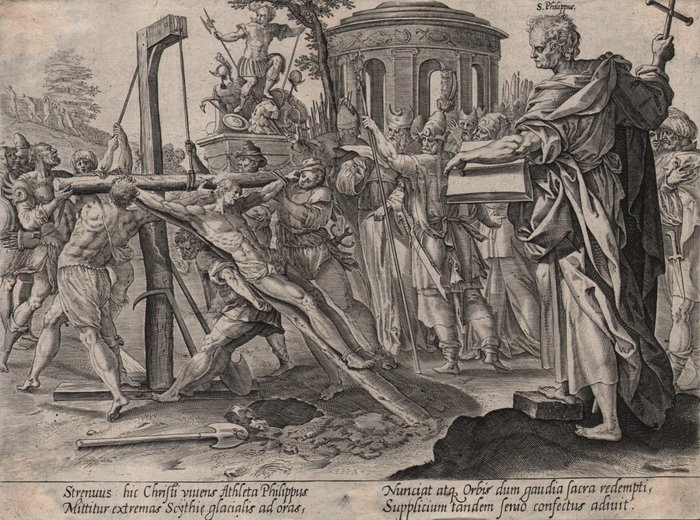 He is sometimes identified with Jude, the brother of Jesus, but is clearly distinguished from Judas Iscariot, the apostle who betrayed Jesus prior to his crucifixion. Catholic writer Michal Hunt suggests that Judas Thaddaeus became known as Jude after early translators of the New Testament from Greek into English sought to distinguish him from Judas Iscariot and subsequently abbreviated his forename. Most versions of the New Testament in languages other than English and French refer to Judas and Jude by the same name.
He is sometimes identified with Jude, the brother of Jesus, but is clearly distinguished from Judas Iscariot, the apostle who betrayed Jesus prior to his crucifixion. Catholic writer Michal Hunt suggests that Judas Thaddaeus became known as Jude after early translators of the New Testament from Greek into English sought to distinguish him from Judas Iscariot and subsequently abbreviated his forename. Most versions of the New Testament in languages other than English and French refer to Judas and Jude by the same name.
According to tradition, Saint Jude suffered martyrdom about 65 AD in Beirut, in the Roman province of Syria, together with the apostle Simon the Zealot, with whom he is usually connected. The axe that he is often shown holding in pictures symbolizes the way in which he was killed. Sometime after his death, Jude’s body was brought from Beirut to Rome and placed in a crypt in St. Peter’s Basilica which was visited by many devotees.
12. Bartholomew
Bartholomew was one of the twelve apostles of Jesus according to the New Testament. He has also been identified as Nathanael or Nathaniel, who appears in the Gospel of John when introduced to Jesus by Philip (who also became an apostle), (John 1:43–51) although many modern commentators reject the identification of Nathanael with Bartholomew.
 Eusebius of Caesarea’s Ecclesiastical History (5:10) states that after the Ascension, Bartholomew went on a missionary tour to India, where he left behind a copy of the Gospel of Matthew. Other traditions record him as serving as a missionary in Ethiopia, Mesopotamia, Parthia, and Lycaonia. Popular traditions and legends say that Bartholomew preached the Gospel in India, then went to Greater Armenia.
Eusebius of Caesarea’s Ecclesiastical History (5:10) states that after the Ascension, Bartholomew went on a missionary tour to India, where he left behind a copy of the Gospel of Matthew. Other traditions record him as serving as a missionary in Ethiopia, Mesopotamia, Parthia, and Lycaonia. Popular traditions and legends say that Bartholomew preached the Gospel in India, then went to Greater Armenia.
In art Bartholomew is most commonly depicted with a beard and curly hair at the time of his martyrdom. According to legends he was skinned alive and beheaded so is often depicted holding his flayed skin or the curved flensing knife with which he was skinned.
More to Come . . .
{}{}{}
